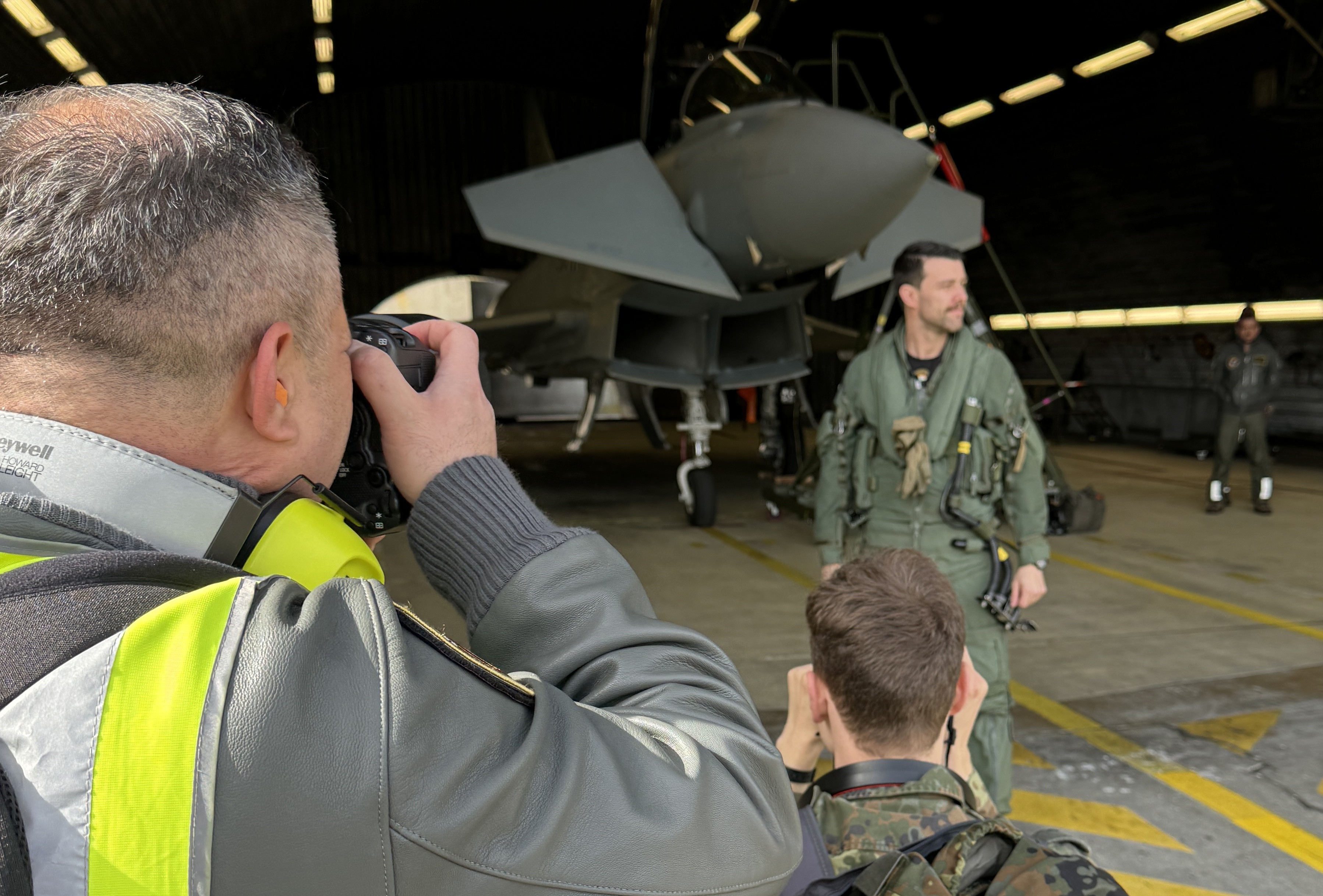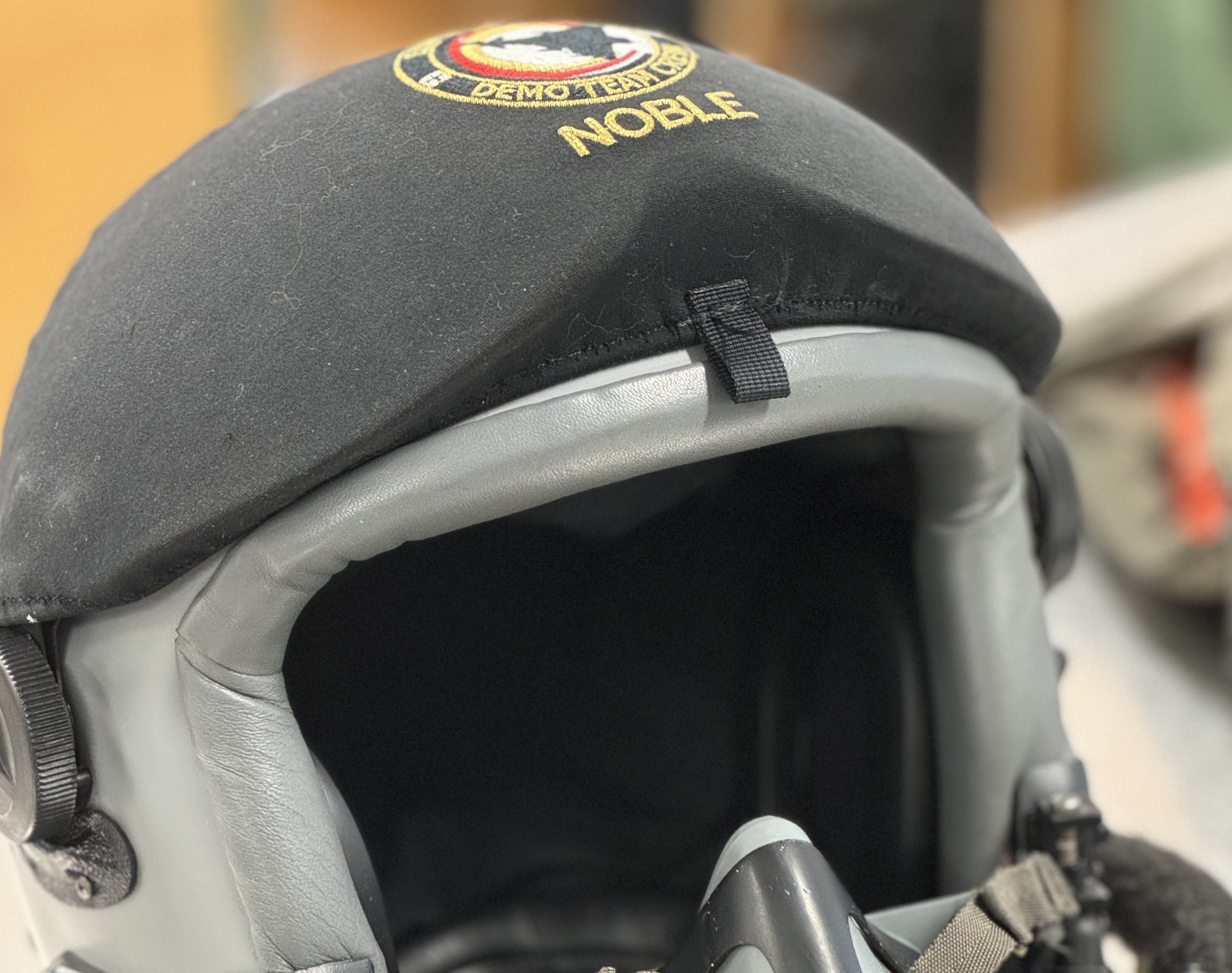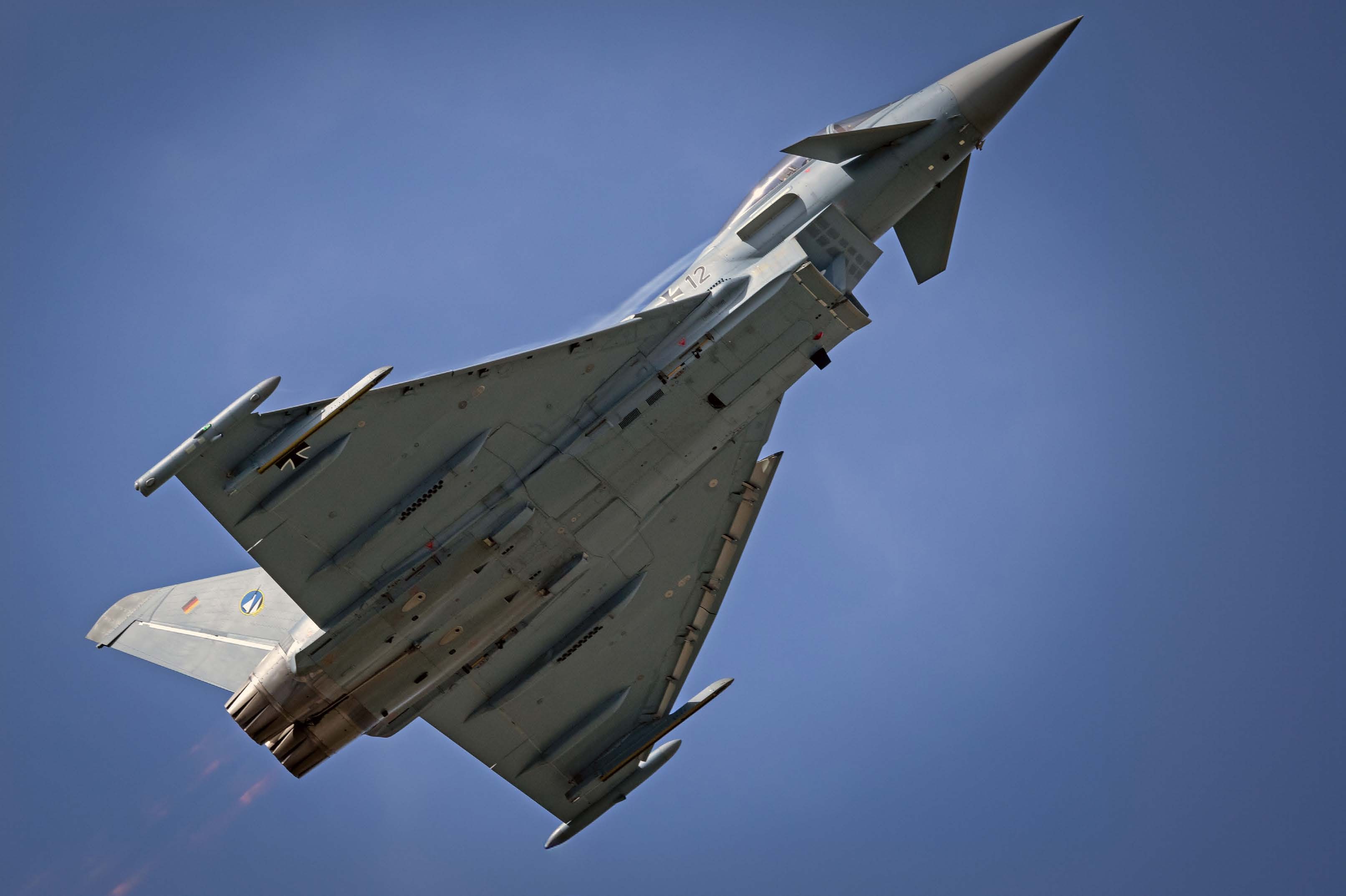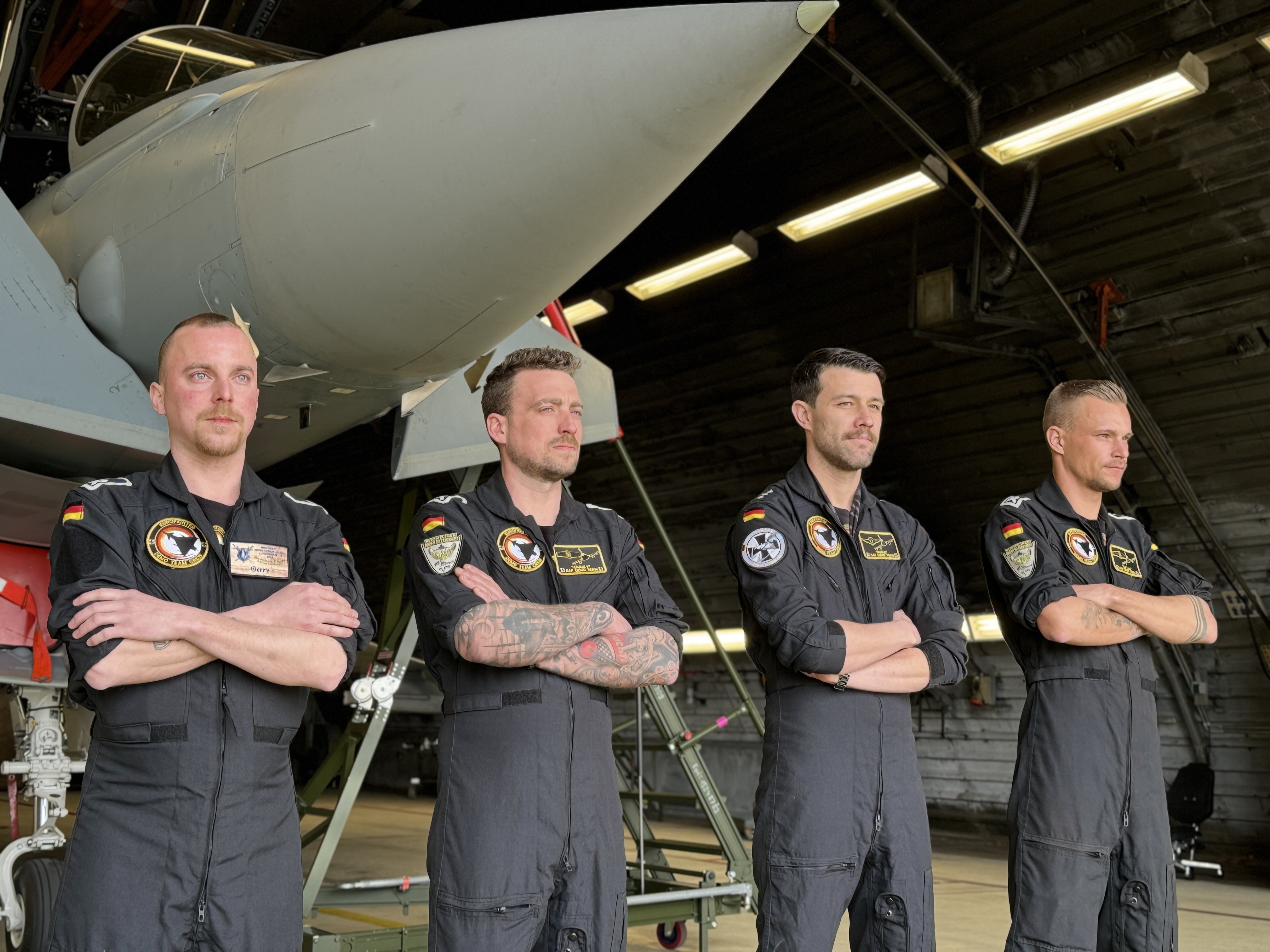Alex, call-sign ‘Noble’, the 2021-24 German Air Force Display Pilot, is that he’s a firefighter’s son. That’s important. Or rather, the fact that his dad was a firefighter at Neuburg Air Base is a key part of the making of Captain ‘Noble’.
“As a little kid, because of my dad’s work, I was often allowed onto the base with him. At the time I watched the Phantom jets flying. It triggered something in my brain that said ‘I have to do this’,” Noble explains.
It sounds like something Spielberg might script, but Noble beat incredible odds and conquered every test under the sun to come home.

EARLY ADVENTURES
After school, he became an apprentice maintenance mechanic with Fighter Bomber Wing 32 at Lechfeld Airbase, home of the ECR Tornado fleet. Later, aged 21, he successfully applied to become an officer. He went to Munich for an intense assessment.
He confides: “They carried out a full-blown medical. Then you had to go into a simulator for more specific tests followed by an interrogation by a psychologist as to why you wanted to be there.”
Noble passed and was selected for fixed-wing aircraft, which then led to more detailed simulator tests of his flying ability. He even practised at home on Microsoft Flight Simulator to sharpen up!
It was then off to Officer Training School. Finally, he got to fly a plane. Noble’s first flying experience came when he started training at Goodyear Airport in Arizona. His first solo flight came in a Grob G120. He admits: “You are nervous. It’s like having your first lesson in a car.”
After Goodyear, it was on to Sheppard Air Force Base in Texas where he flew the T6 Texan 2, flying patterns, formations, and at low level. The best progress to the T-38 and learn to fly four-ship formations, then supersonic and, finally, low-level 4-ship.
IT'S PRISON BREAK
After 12 months in Texas, the students got their wings. It’s a day Noble remembers well not least because the finale was marked by a Drop Party which his class decided to theme around the TV show Prison Break.
But, there is one last hurdle. An Introduction to Fighter Fundamentals (IFF) course where pilots learn how to fly tactics Noble made it through everything and returned made it back to Neuburg. And, yes, his dad was still working there!
At Neuburg Noble joined the 742 ‘Zapata’ squadron, carrying out a lot of flying hours, working in the simulators, and preparing for quick reaction alert (QRA).
There were exercises and deployments too, including to Romania for Air Policing when the war in Ukraine started.
PASSING THE AUDITION
“Pilots on the squadron also pick up lots of side jobs,” says Noble. “Every pilot has them — some are technical but necessary, some involve lots of paperwork and some are cool. Like being the display pilot!”

“In Germany, the display pilot is still a combat pilot and their main task in Neuburg is QRA. The role is rotated between different bases and when I heard the Neuburg Air Force base was going to have the job I wanted to do it straight away.”
He adds: “First, you go through simulator flights in what is known as step-down training. You go from 4,000ft and eventually down to 500ft. You tackle all sorts of emergency scenarios and bad weather options too.”
“Then the head of standardisation comes into the simulator and you have to perform the display while he adds in some emergencies like an engine fire. Finally, once you feel comfortable you go into the real jet and practice it for the first time.”
But the special thing about this kind of flying is that you are close to the ground. That makes it spectacular for the crowd. It also means your reaction time is in microseconds.
There are strict parameters — all safety-driven — that each display pilot has to consider but they do have the chance to add their personality to what in essence is a noisy aerial ballet.
Says Noble: “There’s a mix of fast passes, slow passes, loops, a spiral up, a spiral down, an aileron roll, a cube eight all at 500ft. You use a lot of afterburner and you are constantly pulling 9G. Essentially, you max out the jet.

“But the special thing about this kind of flying is that you are close to the ground. That makes it spectacular for the crowd. It also means your reaction time is in microseconds. If you're not fast, you will hit the ground. And the ground never forgives.”
HARD LANDING
It is both physically and mentally demanding because while pilots know their display by heart they can’t plan for the weather conditions.
Noble learned the hard way in Poland. Set to go out on his display there was a delay for an hour because of traffic at the nearby international airport, by which time light cloud had turned into heavy rain.
On my first landing attempt, my jet just blasted down the runway with no chance of braking at all.
He says: “I could still do my display, no problem, but I was not prepared for landing on a concrete surface that was now full of water. On my first landing attempt, my jet just blasted down the runway with no chance of braking at all. It was like landing on ice. I only had 2,000ft of runway remaining but I was still doing 140 knots.”
“My only option was to take off again. That has been my most shocking moment. That incident showed me that the display is not over until it's over and you are back at the bar!”
“On my second time around, I used the minimum landing speed and touched down a little bit harder. It was like a landing on a carrier.”

For the air show display connoisseur, each pilot brings something new but for Noble, it’s the different locations that are memorable.
He says: “Last year we went to the mountainous Mollis Air Field in Switzerland. It was insane. Typhoon showed how special it is there. If you go towards the mountain it can pull up vertically — we don't have any problems with thrust.
“Another show in Poland was good, too, because we flew during sunset. You could see 100,000 smartphone cameras flashing!”
TEAM EFFORT
The former Tornado mechanic has never forgotten his roots. He is keen to emphasise the importance of the wider display team – he has a 10-strong team around him.
He handpicked his maintenance boss emphasising the special bond between the group. When it’s display time it is important to have people around you know and trust.

Then it’s time for action and he goes into his routine: “There are crowds but you need to focus. I go into my bubble 60 minutes beforehand. No media, no press, nothing. Everyone wants to follow you into the cockpit and take pictures but in those final moments, I block it out and mentally prepare. My cockpit is my safe place. I have my routine card on my knee and I go through the steps in my mind.”
After the display Noble is happy to spend time with the fans who flock to the shows. He says: “I want to inspire young people. We talk to people for hours and get a lot of questions. What makes me happy is when young kids come along and say, that was a cool show.”
SHOW STOPPER
The Eurofighter Typhoon is often the star of the show when it comes to displays not least because of the power of the EJ200 engines.
Noble says: “The pure thrust they give is incredible — 2x90 kilo-newtons when I use the afterburner and I use them most of the time. The aerodynamics are a big plus too because our flight control system is awesome. I also like the cockpit design because you can use the whole 360 degrees when we turn our head at 9G.”
Interview over, Noble prepares for his first display flight of 2024. Weather perfect. Good to go. 15:00 hrs. Watches set. The time ticks over — then Noble blasts heavenwards. Afterburners on full. Neuburg Airbase standing to attention. The moves are magnificent and balletic.
As we watch the display a fire engine pulls alongside the runway and the firefighters watch in awe. And, I wonder what are the chances? What are the chances of that firefighter’s child coming to the base to see where their dad works, then 20 years later being the pilot in the cockpit making the world turn and stare?
